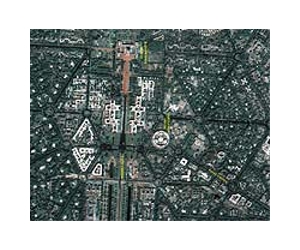 |
New Delhi (AFP) May 14, 2010
Greenpeace said Friday it had detected dangerously high levels of radioactivity near a New Delhi salvage yard where radiation poisoning last month killed a worker and left seven more in hospital.
The environmental group said its experts picked up radiation 5,000 times above normal background levels at the privately owned salvage facility in the city's congested Mayapuri district and its surrounding areas.
"We picked up six hotspots between 20 and 50 metres (65 and 165 feet) from the scrapyard, which means radiation has spread into the streets, which is very dangerous," said Greenpeace radiation expert Van Vande Putte.
"Decontamination has to happen. It is urgent," Belgium-based Putte told a news conference in the Indian capital.
He said the tests were conducted earlier Friday at the salvage yard, where valuable metals are extracted from abandoned machinery and sold in India's flourishing recycling market.
The announcement came after India's Atomic Energy Regulatory Board (AERB) watchdog earlier in the month certified the dump and surrounding area as safe.
The AERB said all radioactive materials had been recovered from the improper scrapping of a machine from Delhi University that contained a radioactive metal used for radiotherapy in hospitals.
The AERB could not be immediately reached for comment.
Rajendra Yadav, a 35-year-old worker at the salvage yard, died due to multiple organ failure on April 26. Seven others were hospitalised.
Putte said workers without protective gear in the yard where the machine ended up are receiving in just two hours radiation equal to the annual individual amount permitted by Indian laws.
The claim puts another question mark on growing concerns over toxic waste disposal methods and safety regulations in India, which plans to gradually switch to nuclear energy from coal- and oil-fired power stations.
Yadav had been given a "shiny piece of a white metal" from the machine as a sample to scout for a buyer and had carried it around in his leather wallet, showing it to potential customers.
The International Atomic Energy Agency (IAEA) said it was the worst radiation incident worldwide in four years.
Greenpeace attacked the AERB for declaring the zone safe.
"It was a case of oversight, negligence and the AERB should have done a better job," Greenpeace activist Karuna Raina told the news conference.
Radiation expert Putte said the toxic radioactive particles were too small to be seen with the naked eye, but that did not mean they were not lethal.
"It may not immediately cause loss of hair or deaths but the risk here is more of developing cancer over tens of years after contamination," the expert warned.
/www.nuclearpowerdaily.com
No comments:
Post a Comment